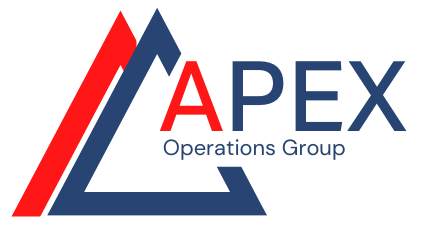A Critical Step Toward Success

Small business owners often find themselves juggling numerous tasks, constantly adapting to changes, and striving for growth. In this dynamic environment, the need for process standardization becomes increasingly crucial. Standardizing processes not only enhances efficiency but also ensures consistency, quality, and scalability.
However, before diving into process standardization, small business owners should first create an asset hierarchy. In this blog post, we will explore the significance of developing an asset hierarchy when standardizing processes and how it can lead to greater success for your small business.
Understanding Asset Hierarchy
An asset hierarchy is essentially a structured, organized framework that categorizes and prioritizes the various assets within your business. These assets can be tangible, like equipment and infrastructure, or intangible, such as intellectual property, knowledge, and human resources. An asset hierarchy is not only about listing assets but also about recognizing their importance and interdependencies.
The Benefits of Developing an Asset Hierarchy
Clarity and Organization: Small businesses often operate in a chaotic environment. Developing an asset hierarchy brings clarity to your business, making it easier to identify the resources you have and how they fit together. This clarity can help you set priorities, allocate resources effectively, and make informed decisions.
Efficient Resource Allocation: When you know which assets are most critical to your business, you can allocate your resources more efficiently. For example, you'll know where to invest more, whether it's in staff training, technology upgrades, or marketing efforts.
Risk Mitigation: Not all assets are equally important, and not all processes have the same impact on your business. By understanding the hierarchy of assets, you can prioritize risk management efforts where they matter most. This is particularly crucial in minimizing potential disruptions.
Standardization and Process Improvement: Standardizing processes becomes much easier when you have a clear understanding of your assets. You can identify the processes that rely on critical assets and ensure they are standardized first, leading to improved efficiency and consistency.
Scalability: As your small business grows, an asset hierarchy helps you plan for scalability. You can identify which assets need expansion, and you can establish a framework for growth that minimizes disruptions.
How to Develop an Asset Hierarchy
Identify and Categorize Assets: Start by making a list of all your business assets, both tangible and intangible. Categorize them based on their importance to your business operations.
Determine Interdependencies: Identify how these assets are interrelated. For instance, your employees may depend on certain software tools, and those tools, in turn, rely on specific hardware.
Prioritize Assets: Determine the critical assets that have the most significant impact on your business. Prioritization should consider factors like revenue generation, customer satisfaction, and risk mitigation.
Document and Communicate: Create a document that outlines your asset hierarchy and ensure that all key stakeholders are aware of it. This fosters a shared understanding within your organization.
Review and Update: Your asset hierarchy isn't static; it should evolve as your business grows and changes. Regularly review and update it to stay aligned with your business goals.
Developing an asset hierarchy is a fundamental step in the process of standardizing operations for small businesses. It provides the foundation for making informed decisions, allocating resources efficiently, and ensuring the long-term success and sustainability of your business. As you embark on your journey towards process standardization, remember that an asset hierarchy is your guiding blueprint toward business excellence. By investing time and effort in this foundational step, you're setting your business up for a future filled with growth, efficiency, and success.


